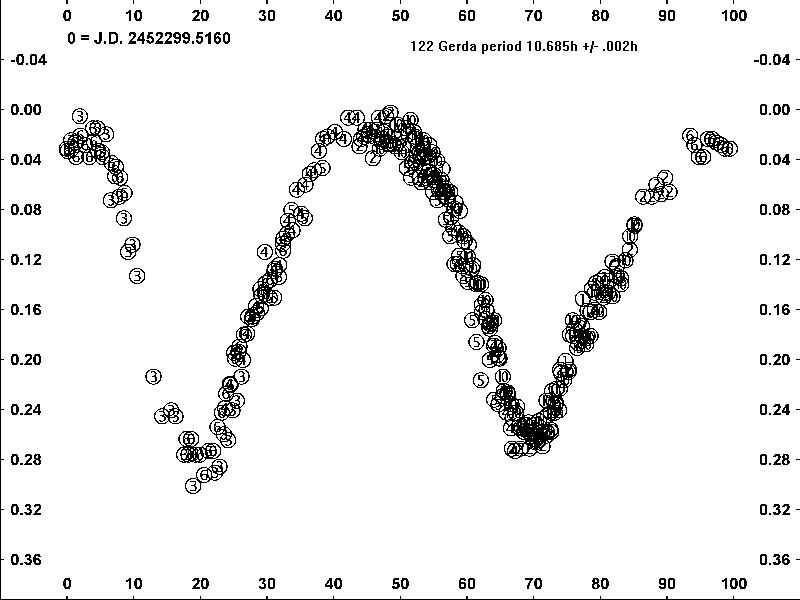|
This asteroid has conflicting light curves published and results shown are from less than full coverage in both studies. Summary from Harris's Asteroid Lightcurve Data File, Updated March 1, 2001:
122 Gerda ST 81.69 7.87 .1883 10.332 0.25 2
Gil Hutton 93 8.903 0.11 2
Di Martino 94a 10.332 0.25 2
Harris 7/87 *
Gil Hutton 93 Gil Hutton, R.G.: 1993, Rev. Mexicana Astron. Astrof. 25, 75-77.
Di Martino 94a Di Martino, M., Blanco, C., Riccioli, D., De Sanctis, G.: 1994, Icarus 107, 269-275.

The seventh night of data (6 = Feb 14, 2002) gives a solution of 10.685h +/- .002h. This is consistent with night six and probably means we now have a good solution.

Di Martino's solution is obviously not a good fit for this data. 
Data plotted to Gil Hutton's solution of 8.905h looks ok after the first four nights of data, but the fifth night (2) does not match at all. This is a false solution. |